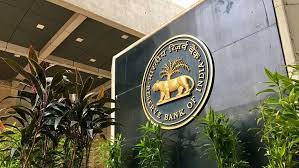
New Delhi : RBI is expected to keep the policy interest rate unchanged in the ensuing meeting of Monetary Policy Committee in the wake of global and domestic factors including inflationary concerns, a majority view emerged amongst top economists and bankers at a brainstorming session jointly organised by ASSOCHAM and EGROW Foundation. ASSOCHAM and EGROW Foundation organised a Shadow Monetary Policy Meeting ahead of the meeting of the RBI Monetary Policy Committee on October 6, 2023.
”The consensus view of economists, bankers and experts in the field of global financial markets is that given the backdrop of slowing growth and rising inflation in global markets, India has managed to strike a good balance between growth and measures to tame inflation,” ASSOCHAM Secretary General Mr Deepak Sood said, complementing an eminent panel for their insight about the state of global economy, particularly in the context of emerging economies.
The intense discussions touched upon not only the likely outcome of the RBI-MPC meeting but also several macro-economic issues. Dr. Surijit Bhalla, Former Executive Director-India of the International Monetary Fund, stated, “Maintaining the current monetary policy stance is crucial, with consensus among experts. Rate cut uncertainty depends on various economic factors.”
He raised concern about the U.S. economy, saying, “U.S. economic patterns are unusual due to high bond yields from Japanese and Chinese disinvestment.” “Seasonally adjusted rates benefit the U.S., with month-on-month inflation at 0.2%-0.3%, that is annualizing to around 3%.” He emphasised, “This low inflation implies a historically unusual real interest rate of about 2.5%.” He is expecting an economic slowdown but dismisses an imminent recession in the U.S.
Rajkiran Rai G, Chairman, ASSOCHAM National Council for Banking and MD, National Bank for Financing Infrastructure and Development said RBI is likely to maintain the policy rate amidst high retail inflation Explaining his views on the economy he said “India’s remains the world’s fastest-growing economy. Economic indicators for the first half of 2023 signal expansion driven by domestic demand, government capital expenditure, and improved capacity utilisation. However, concerns of a potential growth slowdown in upcoming quarters due to election-related capex moderation, along with urban and rural demand disparities, monsoon uncertainty, export slowdown, and global financial conditions persist. We anticipate a gradual, sector-specific recovery, despite challenges. Key export sectors like petroleum, gems, jewellery, handicrafts, textiles, garments, and chemicals have experienced a decline in growth. Initiatives such as the PLI scheme and trade deals aim to boost exports.












